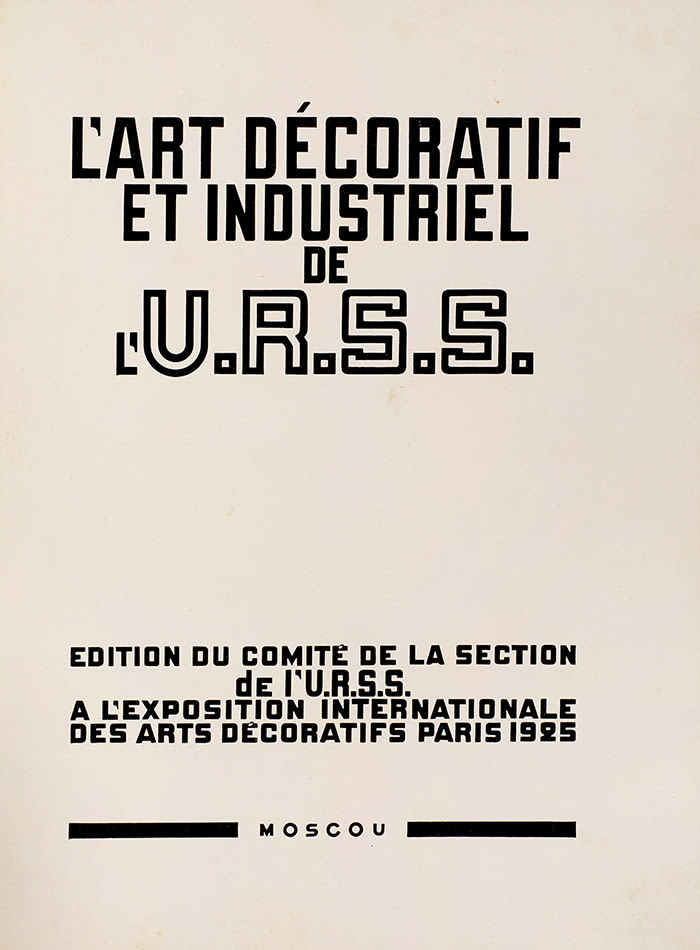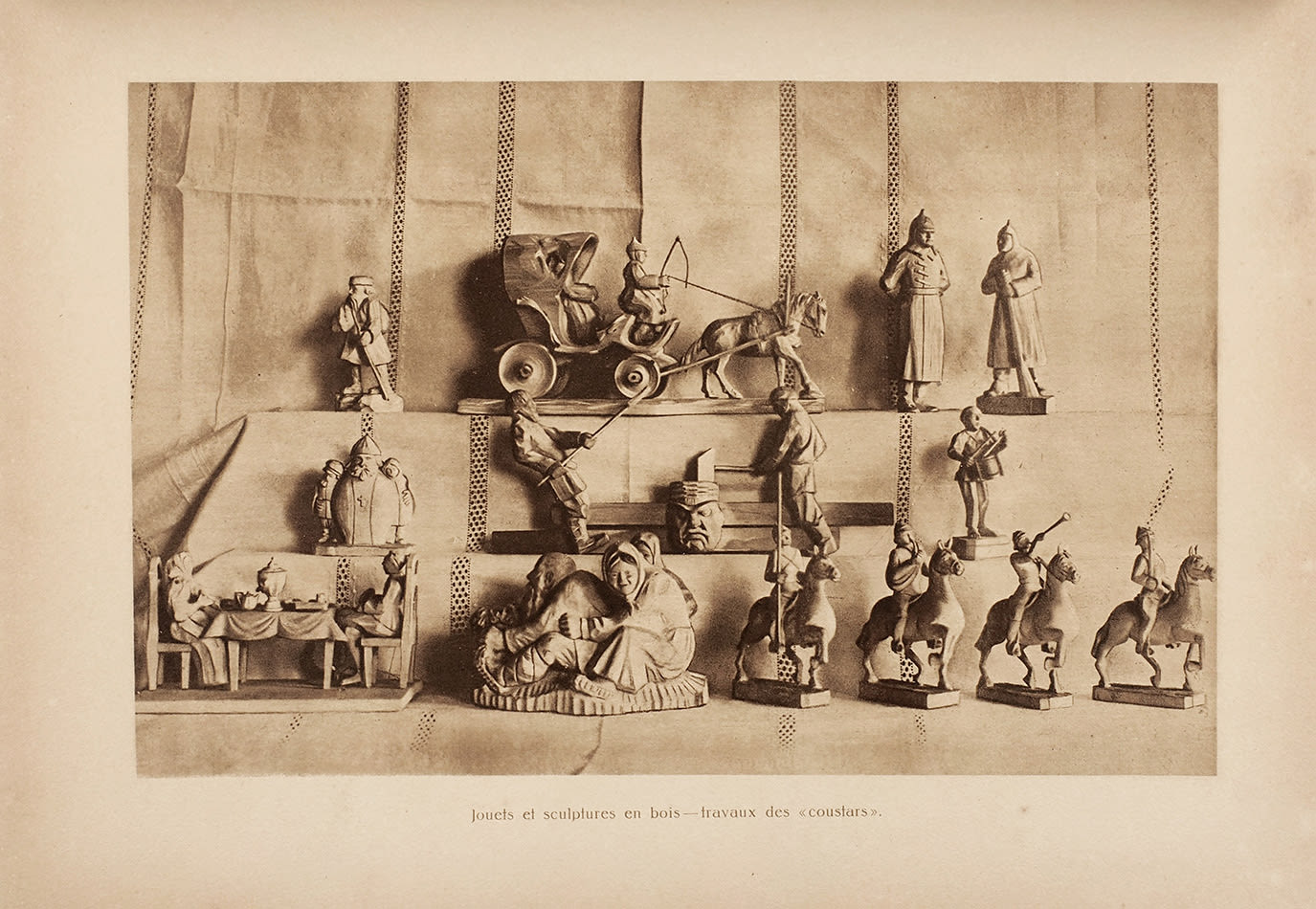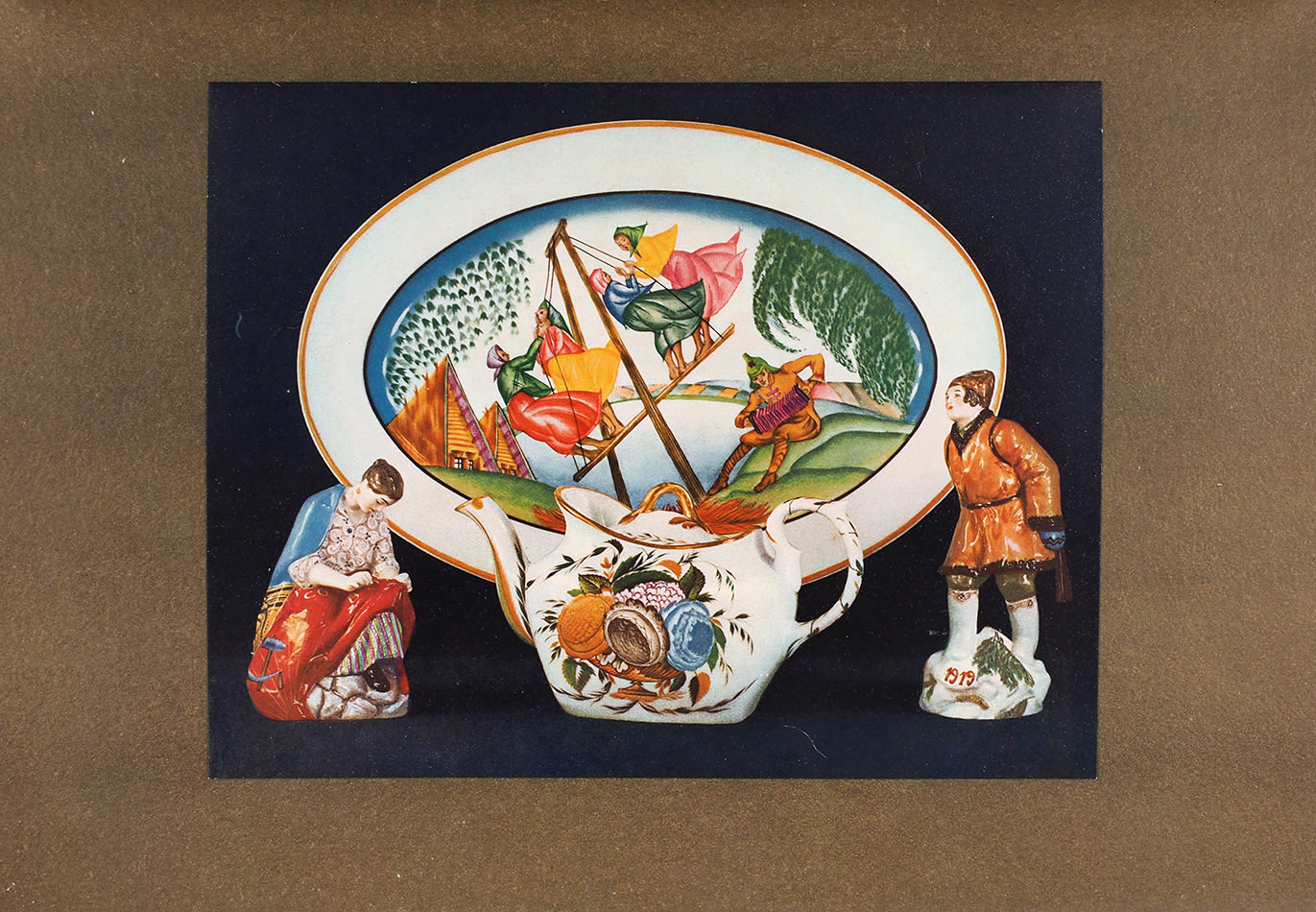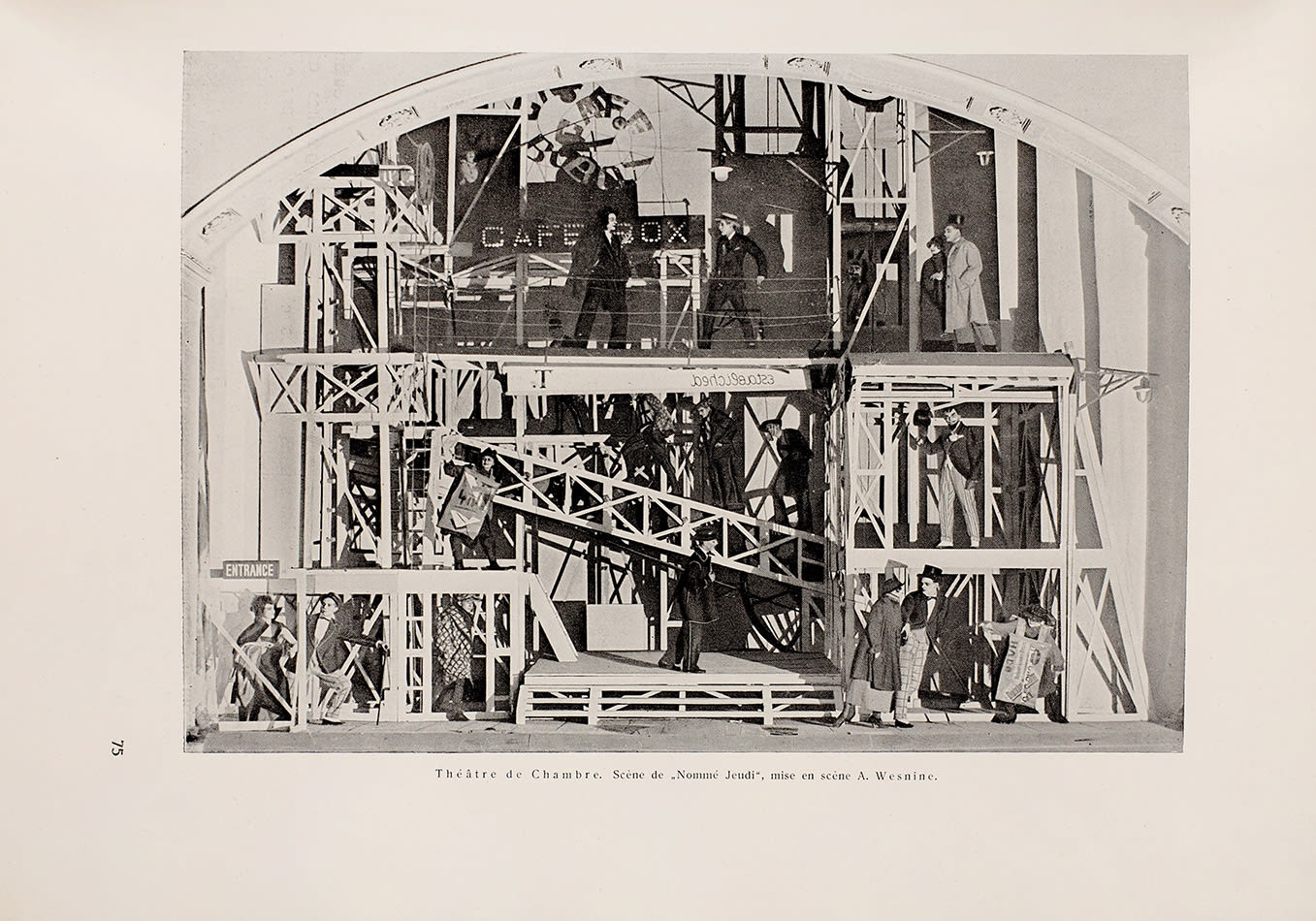L'Art Decoratif et Industriel de l'U.R.S.S
L'Art Decoratif et Industriel de l'U.R.S.S
Please feel free to request a detailed description. Short description: [Decorative and Industrial Art of the USSR]. L’Art Decoratif et Industriel de l’U.R.S.S. Edition du Comite de la section de l’U.R.S.S. a l’Exposition Internationale des Arts decoratifs / Publication of the Committee of the USSR Section at the International Exhibition of Decorative Arts in Paris, 1925. – Moscow: Goznak, 1925. 94, [2] p., XXVIII p. with advertisement, 13 pp. ill.: ill. In French. This catalog was prepared for the International Exhibition of Decorative Arts and Industry, one of the most significant artistic events in Europe during the 1920s. The exhibition took place in Paris from April to October 1925, showcasing works by artists from many countries in the fields of modern decorative arts, architecture, and design. It marked the emergence of the Art Deco movement, which laid the foundations for most contemporary design schools. The USSR’s participation in the exhibition was its first major cultural exchange with France after establishing diplomatic relations in October 1924. It also represented a landmark moment in promoting Soviet avant-garde art abroad. This catalog became one of the few publications through which the Western audience could follow the developments of Soviet avant-garde art. The Soviet pavilion was among the most striking and popular sections of the exhibition. The works of Soviet artists amazed visitors with their innovative techniques and mastery of form. Le Corbusier, who designed one of the French pavilions, remarked that the Soviet pavilion was the only one worth viewing aside from his own. The main artist for the Soviet pavilion was Alexander Rodchenko. He designed the “Workers’ Club” (Izba-Reading Room) and created the cover and title page for the Soviet section’s catalog. The cover of this catalog is recognized as one of Rodchenko’s finest achievements in book design. Overall, the catalog became a landmark of Soviet avant-garde art from the 1920s. Rodchenko’s advertising posters, also exhibited at the event, were awarded the Silver Medal. SKUMS002151





